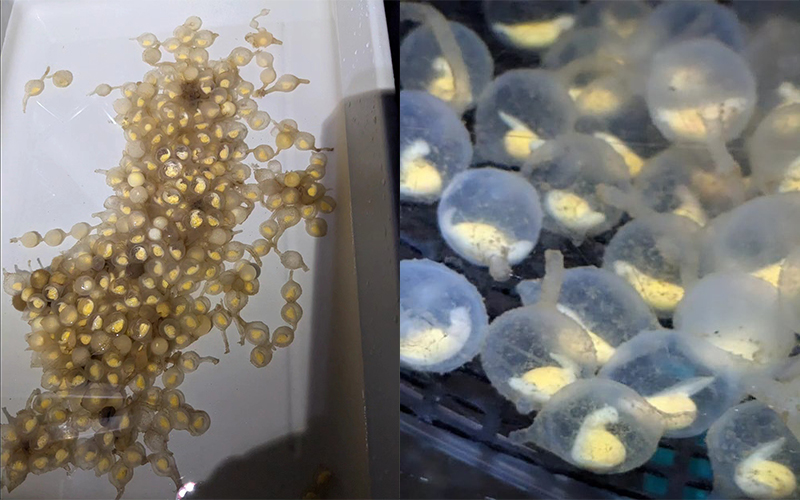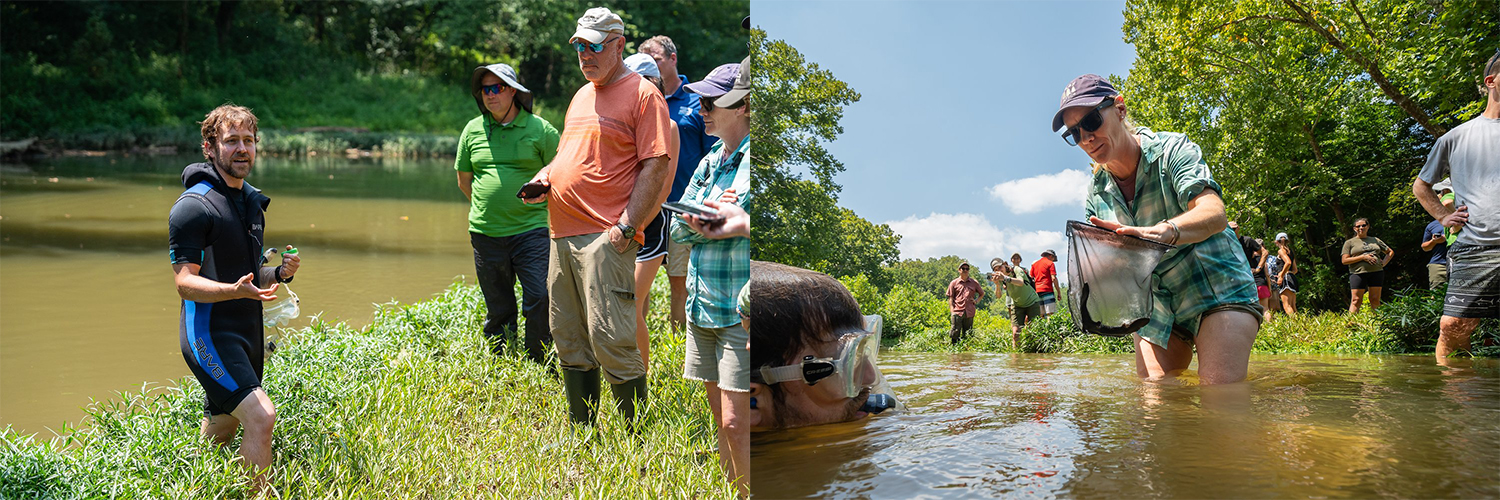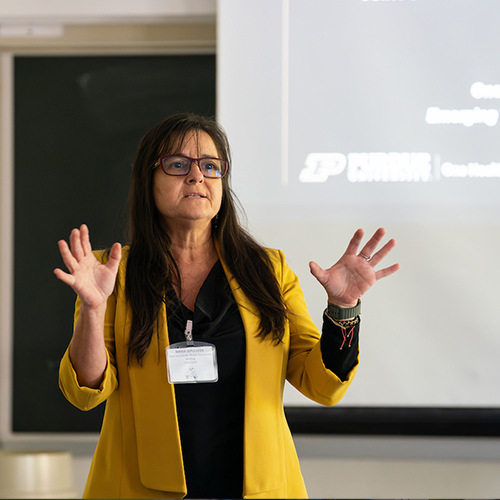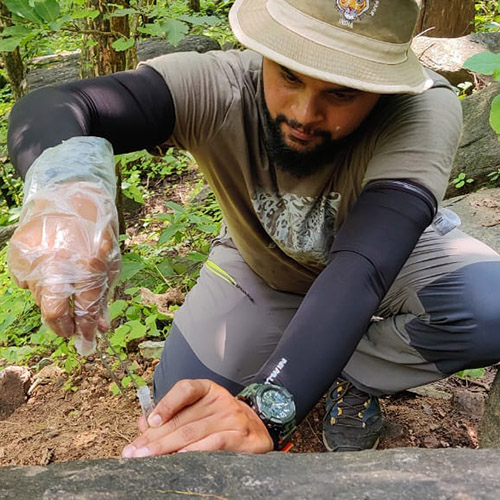Restoring Indiana's Hellbenders
The eastern hellbender (Cryptobranchus alleganiensis alleganiensis) is a large, fully aquatic salamander whose nicknames include snot otter, water dog, devil dog, Allegheny alligator and water eel. Habitat loss and poor water quality started their decline in Indiana in the early to mid-1900s. Hellbenders play an important role in aquatic ecosystems and are indicators of clean water.
For 17 years, Rod Williams, Help the Hellbender lab founder and adjunct professor of forestry and natural resources at Purdue University, has studied eastern hellbenders, with help from a team of Purdue researchers and specialists from state and federal agencies. This collaboration has also spearheaded regional conservation efforts and worked to advance hellbender captive-rearing, or the raising of this ancient animal for their eventual return to the wild.
Each fall, eggs are gathered from rivers and streams in southern Indiana, Kentucky and Ohio by project partners including Ohio DNR Division of Wildlife, Ohio State University and Kentucky Department of Fish and Wildlife Resources. These eggs are then split among the Help the Hellbender lab and zoo partners, to be raised in captivity. At age 3 or 4, the juvenile salamanders are returned to the wild with hopes of increasing the population and encouraging breeding.
 The eggs are laid in long strands that often become tangled. The eggs are collected (the nonviable ones are removed) and cut apart and placed in the rearing tanks. Photos provided by Ohio Department of Natural Resources, one of the project partners collecting eggs for the captive rearing program in Indiana.
The eggs are laid in long strands that often become tangled. The eggs are collected (the nonviable ones are removed) and cut apart and placed in the rearing tanks. Photos provided by Ohio Department of Natural Resources, one of the project partners collecting eggs for the captive rearing program in Indiana.  Sherri Reinsch, Hellbender Husbandry Coordinator at Purdue University, measures and weighs young hellbenders raised in captivity to track their progress.
Sherri Reinsch, Hellbender Husbandry Coordinator at Purdue University, measures and weighs young hellbenders raised in captivity to track their progress.  Sherri Reinsch, Hellbender Husbandry Coordinator at Purdue University, measures and weighs young hellbenders raised in captivity to track their progress.
Sherri Reinsch, Hellbender Husbandry Coordinator at Purdue University, measures and weighs young hellbenders raised in captivity to track their progress. Over the years, the lab has procured nearly $7 million in grants to fund engagement and research. All told, the Help the Hellbender lab has produced 33 research publications, eight Extension publications and 12 Extension videos that discuss hellbender biology and how researchers and the general public can aid hellbenders and other species by keeping waterways clear of obstructions and clean.
The Help the Hellbender lab, now under the leadership of Purdue Forestry and Natural Resources professor Jason Hoverman, is collaborating with the Indiana Department of Natural Resources, Indiana Division of Fish and Wildlife, The Nature Conservancy and several other partners across 13 states on a number of conservation projects and educational opportunities for teachers, children, farmers and more.
 Jason Hoverman helps coordinate a hellbender release into the Blue River in Corydon, Indiana.
Jason Hoverman helps coordinate a hellbender release into the Blue River in Corydon, Indiana.  Nick Burgmeier (left), Purdue Extension Wildlife Specialist, speaks to attendees at an August 2024 event where captivity raised hellbenders were released into the Blue River near Cordyn, Indiana.
Nick Burgmeier (left), Purdue Extension Wildlife Specialist, speaks to attendees at an August 2024 event where captivity raised hellbenders were released into the Blue River near Cordyn, Indiana. The newest addition to the partnership’s conservation efforts is the Farmers Helping Hellbenders project, which offers funding opportunities to agricultural producers in the Blue River-Sinking Watershed to implement conservation practices on their land to assist with topsoil retention, the improvement of aquatic resources and the recovery of eastern hellbenders.
The project, made possible by $2.7 million in funding from the U.S. Department of Agriculture’s Regional Conservation Partnership Program, aims to improve hellbender habitat in a four-county region in south-central Indiana — the only remaining habitat for hellbenders in the state — by expanding the use of agricultural conservation practices that lead to decreased sedimentation in local river systems. Williams talks more about hellbenders and the Farmers Helping Hellbenders project in this YouTube video.
The program is already producing significant results. When the first two years of signed contracts (2023 and 2024) are complete, they are expected to result in:
- Reduction of sediment by 2,568,680 pounds per year;
- Reduction in nitrogen by 9,040.37 pounds per year;
- Reduction in phosphorus by 2,374.76 pounds per year
Eligible producers and forest landowners who wish to implement conservation practices on their land should discuss their options with their local district conservationist. For more information or to submit an application, contact your local district conservationist by visiting Farmers.gov/Service-locator.
An in-depth look at the hellbender program’s success is available through the story “Rebuilding Indiana’s Hellbender Habitat” from the USDA Natural Resources Conservation Service.
Photography by Joshua Clark, video by Kelsey Getzin.






